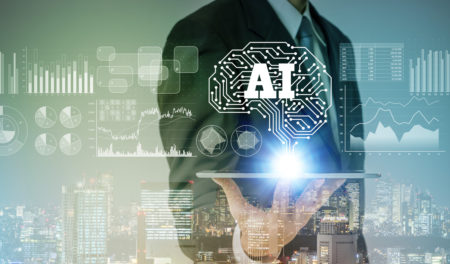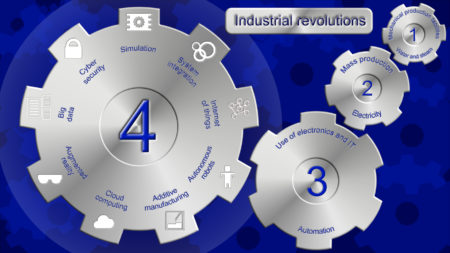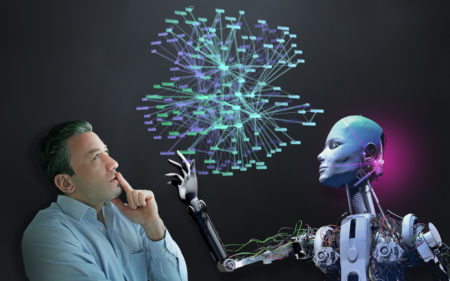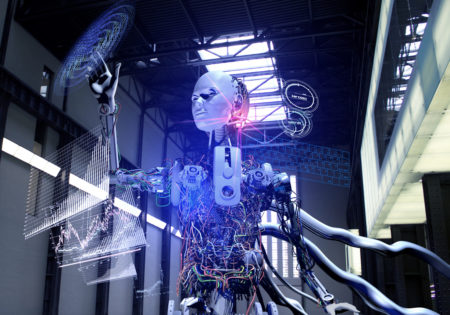Artificial Intelligence is not a new idea. The term, Artificial Intelligence has actually been with us for almost 70 years. Imagine you are back in time and you can see computer scientist John McCarthy at work on machine learning. It’s 1956, and he crowns his work with the term, Artificial Intelligence. Likewise, he invented many developments in computer science. Thus history has named him the “Father of AI,” or “Artificial Intelligence.”
In our previous blog, we focused on some practical tips for creating an instructional video. We hope you are up to date on that information. And we are here to help you on such practical projects. In fact, we would be genuinely honored to make your instructional video dreams come true.
Introducing: The Artificial Intelligence Story

Artificial Intelligence is Information Sharing, Data Driven and Much More
However, today’s Bullhorn Media Blog focuses on something a little more theoretical. We bring you this topic because we have promised you updates on technology. Plus, we keep hearing the term “Artificial Intelligence” bandied about in many different contexts. So we investigated it for you. Consider this blog merely an introduction to this vast, and red-hot topic.
From Science Fiction to Science
Today, Artificial Intelligence has invaded our homes and businesses. But it has not arrived in the form of invading armies of robots, as story-tellers of the past feared. Today Artificial Intelligence is a powerful and benign source for good and for good business. Read on to learn how.
“Hey, Seri, Call my husband…” We don’t even think about the technology behind simple requests like, “Alexa, dim the lights and play some soft jazz.” But it took 70 years of technological and computer developments to reach this turning point. We are now in a fourth industrial revolution with the evolution of AI.
Welcome to The Fourth Industrial Revolution
To create Artificial Intelligence and to take advantage of machine learning, we needed to prepare support technologies. Step by step, the perfect environment for Artificial Intelligence has evolved.
1. Such support bloomed in “the breakthroughs of computing power.”
2. AI grew through the “advent and availability of big data…”

Did You Know You are a Living in the Time of the 4th Industrial Revolution?
3. Artificial Intelligence needed the expansion of “cloud hosting and storage,”
4. Soon it gained highly “sophisticated software and complex algorithms…”
With these 4 pillars of the Fourth Industrial Revolution in place, we now see AI becoming a powerful ally at home and at work. (And, no, there are no Terminator robots on the horizon.)
Introducing Artificial Intelligence (AI) in Basic Language
As we mentioned, Stanford Researcher John McCarthy created the term in 1956, and he “defined the key mission of AI as a sub-field of computer science.”
To put it simply, “…artificial intelligence (AI) is the ability of a machine or a computer program to think and learn. The concept of AI is based on the idea of building machines capable of thinking, acting, and learning like humans.”
We can go a little deeper into the definition and add two more important points:
a. “Intelligence is an interdisciplinary concept that studies the possibility of creating machines capable of interacting with their environment…”
b. Machines that are thus capable can act “upon the received data in a manner considered intelligent.”
Qualities of Artificial Intelligence
A machine or computer program which (or who) has Artificial Intelligence must exhibit certain traits.
1. First, it should be able to “mimic a human thought process and behavior.”
2. Second, it should act in a human-like way—intelligent, rational, and ethical.
To go deeply into the abstract meanings behind human intelligence and AI, Bullhorn recommends checking out the online resource of Frequently Asked Questions at Stanford. There you’ll find some deep reading and provocative thoughts as you explore Artificial Intelligence.
Is AI The Same As Machine Learning?
Experts tell us AI is actually not the same as Machine Learning. Not really. Although we often exchange these two terms, they are not the same. “The entire machine learning concept is based on the assumption that we should give machines access to information and let them learn from it themselves.” AI is a much broader term. Artificial intelligence, in its turn, is a bunch of technologies that include machine learning and some other technologies like natural language processing, inference algorithms, neural networks, etc.”
Video and Artificial Intelligence

AI in the 21st Century, Is it Science or Science Fiction?
And now the Bullhorn Blog gets to our own area: the video industry. In the future, how will AI improve the video experience? (And we are not talking about VR here.)
1. Personalization and Recommendation: We already have programs that “recommend” video to us based on what we watch. But an AI program with content discovery could, “could learn so much about a user’s viewing behavior as to truly understand what the user likes to watch—but not just based on past data.
2. For example, “when combined with technologies like facial recognition (using a front-facing camera on a laptop, for example, a system could learn to understand the emotional state of the user…
3. Moreover, the smart Artificial Intelligence could combine that understanding “with other data (like time of day, weather, calendar activities, etc.)…” Then the AI might suggest videos across platforms that the user would be most likely to enjoy. In business, this type of intelligence might lead to very “personalized recommendations across e-commerce platforms like Amazon.”
A Glimpse into Future Video Experience
Because of AI and its machine learning, there will soon be more to the video experience than we can now imagine. Experts tell us, “The future video experience is more than just “lean back.”
- “It will integrate social and commerce.”
- Plus Data will drive it,
- And it will become more intelligent, as it learns more about you, the client. And more personalized.
- More distributors will deploy AI systems, which become more intelligent over time. And the gap between traditional TV and streaming will grow. Forget Skynet. Think TVNet. Watching video will never be the same.”
Three Types of Artificial Intelligence

Artificial Intelligence: Stepping From the World of Science Fiction into Science.
To simplify some understanding of AI and its capabilities, let’s look at three levels of it.
1. Weak AI: This refers basically to an AI program. Thus it needs to be “capable of demonstrating human intelligence…” Likewise, it must follow up on an intention, “to carry out specific tasks.”
2. Strong AI: This would be AI capable of showing self-awareness. And it would have “the ability to think and make decisions for itself at the same level as a human being.”
3. AI Super Intelligence: This frightening level of AI indicates levels of machine intelligence superior to human beings. This is the super AI of science fiction, the realm of West World and War Games. In this iteration, the AI is fully in control of its existence. (…and perhaps ours.)
Fear Not Today’s Artificial Intelligence
Currently, it should relieve your mind that only type I, the Weak AI, thrives today. You probably unknowingly used Artificial Intelligence or programs of machine learning technology, this very day. You see, the Future is Now. Here’s an example of an ordinary day in which Artificial Intelligence touched your life:
- You might have used Apple’s personal assistant, Siri to make some business calls, and a few personal ones on your lunch break.
- Then, that afternoon, after work, you directed Amazon’s Alexa to adjust the temperature and lighting in your living room.
- Later you noticed how smartly your emails detected your questions and directed perfectly crafted replies before you even answered them.
- As you texted a friend that evening, you were surprised at how perfectly the texting program “predicted” the ends of your sentences, no matter how badly you spelled the words.

AI is Already Touching Our Lives on Many Levels.
- And later when you settled in for a little friend time on Facebook, did you notice how the program identified all the folks in your group photo?
- Then you might have noted some perfect suggestion, seemingly hand-crafted for your quiet evening at home. Maybe the suggestion was shopping ideas from Amazon or a special video streaming with Netflix.
All of these simple moments were brought to you by some type of AI. The programs are benevolently intent on improving your customer experience and enhancing your financial opportunities. Only time can tell whether AI is a huge threat or simply a techno-gift that will continue to make life better for us in many ways.
Note from the Bullhorn Blogger:
So, after writing this blog, I tried a little AI experiment with Seri.
I asked her to tell me a joke about artificial intelligence. I’m sure most readers have done this, and if you have not, I imagine you will. Here is the joke she told me:
She said, “I told my friend ten puns. I was trying to make him laugh, but no pun in ten did.”
I thought that was a pretty intensely linguistic twist on a joke, which I am sure is exactly what Seri intended. Thank you for reading the blog at Bullhorn Media, where we are keeping track of new global developments in technology, video, and photography. (Now, please do not tease Seri.)


